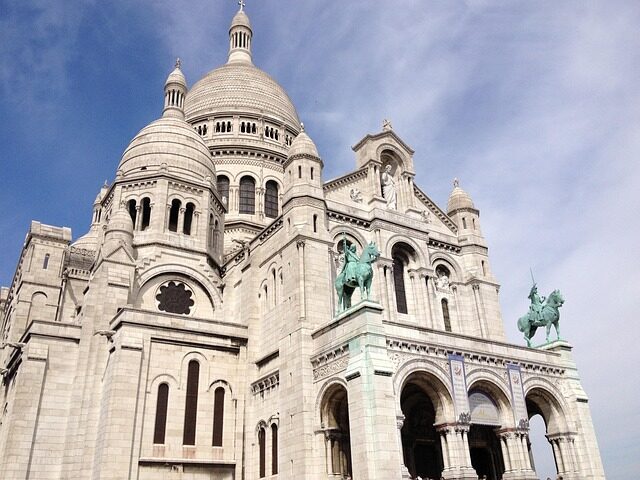Scandinavian architecture has a story as complex and nuanced as the landscapes that define the Nordic region. From the early influence of the Vikings to the modern minimalist designs, the history of Scandinavian architecture reflects a constant interplay between environment, culture, and innovation.
- How did Scandinavian architecture evolve over the centuries?
- What are the key characteristics of Scandinavian architecture?
- Which notable movements influenced Scandinavian architecture?
- How did Medieval Scandinavian architecture shape contemporary designs?
- What role did vernacular traditions play in Scandinavian architecture?
- What are some iconic examples of Scandinavian architecture?
- How is Scandinavian architecture responding to modern environmental challenges?
- How did Scandinavian architecture evolve over the centuries?
- What are the key characteristics of Scandinavian architecture?
- Which notable movements influenced Scandinavian architecture?
- How did Medieval Scandinavian architecture shape contemporary designs?
- What role did vernacular traditions play in Scandinavian architecture?
- What are some iconic examples of Scandinavian architecture?
- How is Scandinavian architecture responding to modern environmental challenges?
How did Scandinavian architecture evolve over the centuries?
The architectural journey in Scandinavia began with robust fortresses and boathouses of the Viking Age, where functionality ruled. As political and religious landscapes shifted, so did the structural designs, giving rise to the ornate wooden stave churches of the medieval period. By the late 19th century, a distinctive style emerged that would become known as Swedish Grace, marking a point where traditional forms met modernity.
Throughout the 20th century, Nordic architects began weaving local traditions with international styles, leading to functional and minimalist designs. These designs were characterized by their harmonious relationship with nature, a commitment to social welfare, and a focus on creating high-quality housing. Movements such as Functionalism played a significant role in this evolution, emphasizing a human-centric approach.
Today, Scandinavian architecture continues to reflect a deep respect for history while pushing the boundaries of design and sustainability, crafting spaces that are both innovative and intimately connected to the cultural roots of the region.
What are the key characteristics of Scandinavian architecture?
Defined by simplicity, comfort, and functionality, Scandinavian architecture integrates a deep connection to nature. Light plays a vital role in these designs, with an emphasis on maximizing natural illumination and creating airy, open spaces. The use of organic materials like wood complements the bright and often neutral color palettes, enhancing the feeling of tranquility.
The architectural layout typically emphasizes clean lines and minimal ornamentation. This minimalist approach not only reflects the aesthetic preferences of the region but also focuses on practical solutions for living in harsh climates. Additionally, the integration of energy-efficient features showcases the Scandinavian commitment to environmental stewardship.

At the heart of Nordic design lies the concept of ‘Hygge’, a Danish word that encapsulates the feeling of coziness and contentment. This cultural element is palpable in Scandinavian architecture, where the creation of warm, inviting spaces is a priority.
Which notable movements influenced Scandinavian architecture?
Scandinavian architecture has been shaped by various movements throughout history. The Arts and Crafts movement of the late 19th and early 20th centuries advocated for craftsmanship and natural materials, which resonated with Nordic sensibilities. Functionalism then took hold in the 1930s, advancing the idea that architectural design should be dictated by the purpose of the building.
Later, Modernism made a significant impact, with Scandinavian architects adding their unique touch to the movement’s principles of function and simplicity. The resulting style, sometimes called Nordic Modernism, incorporated local materials and techniques, creating a distinctive Scandinavian Modernist aesthetic.
Contemporary movements continue to influence the region’s architecture, with a growing focus on sustainable design and innovative solutions to housing that respond to current environmental challenges.
How did Medieval Scandinavian architecture shape contemporary designs?
The legacy of Medieval Scandinavian architecture is evident in contemporary designs, with the usage of wood as a central theme continuing to this day. The intricate woodwork and structural solutions of stave churches, for example, inspire modern architects in their quest for innovation and craftsmanship.

Elements like the steeply pitched roofs, designed to combat heavy snowfall, have evolved but still feature in modern Nordic buildings. The Medieval practice of building in harmony with the surrounding landscape has influenced current architectural philosophies, focusing on sustainable and context-sensitive designs.
Moreover, the community-centric ethos of Medieval Scandinavia, where buildings were designed for social gatherings and communal living, can be seen in today’s emphasis on creating spaces that foster social interaction and inclusivity.
What role did vernacular traditions play in Scandinavian architecture?
Vernacular traditions form the bedrock of Scandinavian architectural identity. Local materials such as timber, stone, and thatch were not just readily available but also provided the necessary insulation against the Nordic climate. These materials have been continuously adapted for modern use, ensuring that vernacular traditions remain vibrant.
The configuration of ancient Scandinavian farmsteads, with living quarters (Innhus) and outbuildings (Uthus) for agricultural purposes, influenced the functional and community-focused layout of modern Scandinavian housing. The balance of private and shared spaces is a testament to these deep-rooted traditions.
The enduring influence of vernacular architecture is also seen in the minimalist, unadorned aesthetic of Scandinavian design, which places the emphasis on honest expressions of materiality and form.

What are some iconic examples of Scandinavian architecture?
Iconic buildings that capture the essence of Scandinavian architecture include the Stockholm City Hall and the Woodland Cemetery, masterpieces that blend traditional elements with contemporary design. In Norway, the Urnes Stave Church, with its exquisite wooden carvings, stands as a testament to the region’s medieval craftsmanship.
Modern examples like the Tree Hotel in Sweden demonstrate the ongoing innovation of Scandinavian architects. The hotel’s design respects historical roots while providing a unique experience that harmonizes with the forest environment.
Other examples of contemporary Scandinavian architecture that have garnered international acclaim include the Oslo Opera House in Norway and the Harpa Concert Hall in Iceland, both of which reflect the region’s commitment to cultural expression through architecture.
How is Scandinavian architecture responding to modern environmental challenges?
Scandinavian architecture is at the forefront of environmental design, integrating sustainable practices with cutting-edge technology. Architects from the region are leaders in energy-efficient design, often incorporating renewable energy sources and high-performance insulation into their projects.
The use of green roofs, natural ventilation systems, and smart urban planning reflects the Nordic commitment to reducing environmental impact. As the world grapples with climate change, Scandinavian architecture provides a blueprint for creating buildings that are not only beautiful and functional but also kind to the planet.

The philosophy of ‘sustainable luxury’, where comfort and eco-friendliness go hand-in-hand, is becoming increasingly prevalent in Nordic design, showcasing how the region is embracing modern environmental challenges without sacrificing quality and aesthetics.
To further delve into the rich tapestry of Nordic design, let’s take a look at an insightful video that explores contemporary interpretations in the history of Scandinavian architecture.
In conclusion, the history of Scandinavian architecture is a rich narrative that continues to evolve. Influenced by the functionalism movement, traditional elements, and a profound respect for the environment, it stands as a testament to the region’s innovative spirit and commitment to creating spaces that are as sustainable as they are beautiful. As it responds to modern challenges, Scandinavian architecture remains a beacon of design excellence, revered around the world for its simplicity, functionality, and harmony with nature.


